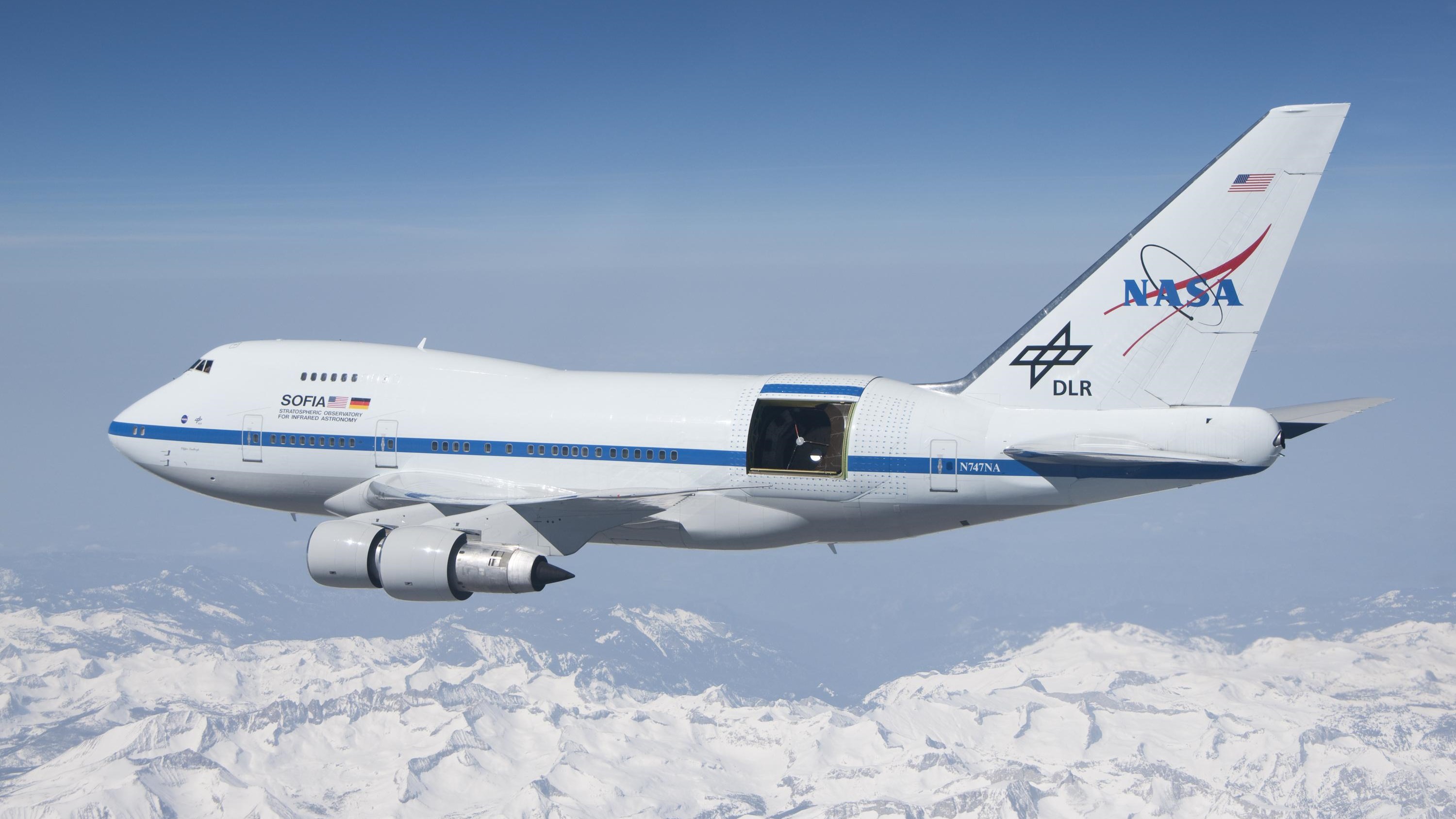NASA's retired flying telescope heads to museum
The aircraft will make its final flight on Tuesday (Dec. 13).

It's not off to the scrapyard quite yet for the historic aircraft that carried NASA's flying telescope.
On Sept. 29, NASA and the German Space Agency (DLR) retired their joint Stratospheric Observatory for Infrared Astronomy (SOFIA) aircraft, a modified Boeing 747SP that lofted a 106-inch (2.7-meter) reflective telescope on overnight flights.
After nearly 20 years of flying as a commercial aircraft for PanAm and United, followed by eight years of science missions for NASA and DLR, SOFIA officially has a retirement home: the Pima Air & Space Museum in Tucson, Ariz. On Tuesday (Dec. 13), the aircraft will take its final flight, journeying from its former home, NASA's Armstrong Flight Research Center in California, to Pima, according to a NASA statement.
Related: NASA's flying telescope is coming to the end of its mission but leaves a strong science legacy
The Pima team is still assessing plans for the preservation and display of SOFIA — aircraft taxidermy, if you will — but the plane will eventually go on view to the public.
At Pima, which has six hangars and 80 acres of outdoor display grounds, SOFIA will join other retired NASA aircraft, including the first Super Guppy cargo aircraft that shuttled Saturn V rocket parts during the Apollo program, and the KC-135 "Weightless Wonder V," which flew "zero G" parabolic arcs.
"The SOFIA mission has a powerful potential to inspire, from its discoveries about the unknown in our universe, to the engineering achievements that broke new ground, to the international cooperation that made it all possible," Paul Hertz, senior advisor for the Science Mission Directorate at NASA and former head of astrophysics for the agency, said in the statement. "We are excited SOFIA will continue to engage a diverse new generation of scientists, engineers, and explorers."
Breaking space news, the latest updates on rocket launches, skywatching events and more!
Some of SOFIA's biggest discoveries include finding water in sunlit areas of the moon, mapping magnetic fields in nearby galaxies, and the first observation of the very first molecule in the universe after the Big Bang: helium hydride.
Follow Stefanie Waldek on Twitter @StefanieWaldek. Follow us on Twitter @Spacedotcom and on Facebook.

Space.com contributing writer Stefanie Waldek is a self-taught space nerd and aviation geek who is passionate about all things spaceflight and astronomy. With a background in travel and design journalism, as well as a Bachelor of Arts degree from New York University, she specializes in the budding space tourism industry and Earth-based astrotourism. In her free time, you can find her watching rocket launches or looking up at the stars, wondering what is out there. Learn more about her work at www.stefaniewaldek.com.
